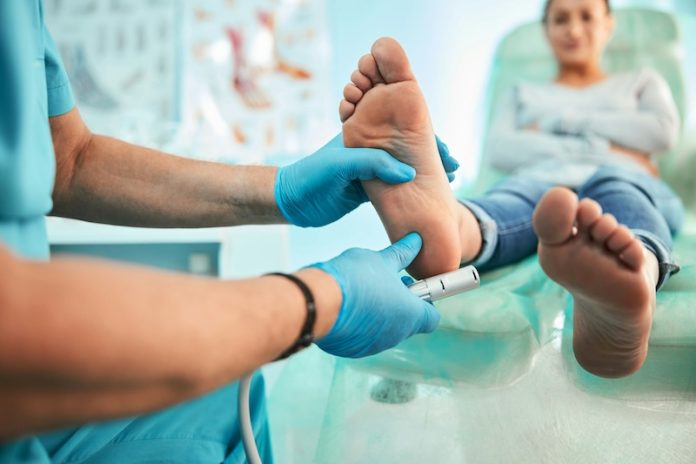
Researchers funded by the National Institutes of Health (NIH) have found a promising way to predict whether a diabetic foot ulcer that looks healed on the surface is actually at risk of reopening.
The test measures how much water escapes through the skin—a process called trans-epidermal water loss, or TEWL. This method, commonly used in burn care, gives doctors a clearer picture of whether the skin’s protective barrier has truly recovered.
Diabetic foot ulcers are one of the most serious and common complications of diabetes. These open sores usually develop on the bottom of the feet and can go unnoticed by patients, especially those with nerve damage (called neuropathy).
If not properly treated, foot ulcers can lead to infections, hospitalization, and even amputation. While many ulcers appear to heal on the surface, the deeper layers of skin may still be weak, making the wound more likely to reopen.
In the new study, researchers from the NIDDK Diabetic Foot Consortium tested over 400 people with diabetes who had foot ulcers that looked healed. At each healed ulcer site, they measured TEWL to assess the skin’s barrier function.
They discovered a clear pattern: people with higher TEWL levels—meaning their skin was losing more moisture—were far more likely to see their ulcers come back. Within just 16 weeks, 35% of participants with high TEWL experienced a recurrence, compared to only 17% of those with low TEWL. In fact, those with high TEWL were 2.7 times more likely to have their ulcer reopen.
These findings show that even when a wound looks healed to the eye, it may not be fully sealed on a deeper level. When the skin’s barrier isn’t working properly, it can’t keep moisture in or stop harmful germs from entering—both of which are vital for maintaining skin health and preventing new infections.
“This study is an important first step in giving doctors a tool to better understand which patients are at the greatest risk of having their ulcers return,” said Dr. Teresa Jones, program director at the NIH’s National Institute of Diabetes, Digestive and Kidney Diseases (NIDDK).
“Foot ulcers are a difficult and dangerous issue for people with diabetes, and identifying wounds that aren’t fully healed could help prevent further damage, reduce amputations, and save lives.”
Currently, there is no widely used test to check how fully a diabetic foot ulcer has healed below the surface. Doctors typically rely on how the wound looks on the outside. This study suggests that measuring TEWL could be added to standard treatment guidelines to make sure the skin is fully functioning before declaring a wound healed.
The researchers hope this discovery will lead to more personalized care for people with diabetes, helping doctors catch potential problems earlier and tailor follow-up treatments based on the true health of the skin. The full study will be published in Diabetes Care, a journal of the American Diabetes Association.
If you care about diabetes, please read studies about bananas and diabetes, and honey could help control blood sugar.
For more health information, please see recent studies about Vitamin D that may reduce dangerous complications in diabetes and results showing plant-based protein foods may help reverse type 2 diabetes.
The research findings can be found in Diabetes Care.
Copyright © 2025 Knowridge Science Report. All rights reserved.



